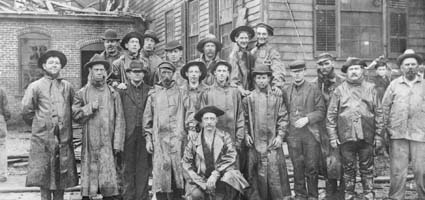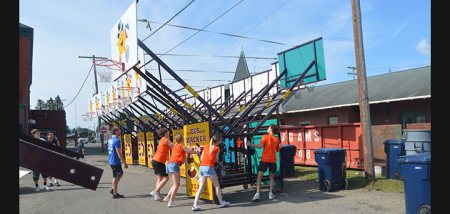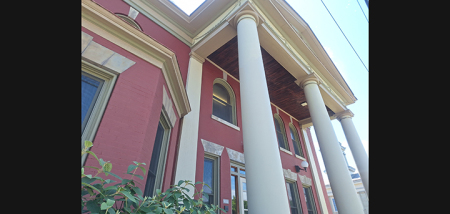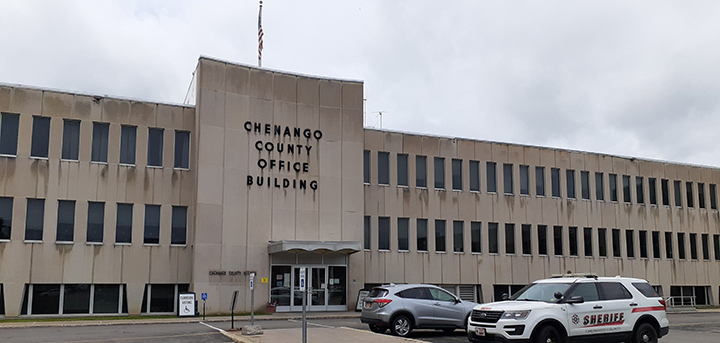$50,000 In Damage Done To Pharmacal Co.
Published:
October 12th, 2012

Editor’s Note: In recognition of National Fire Prevention Week, City of Norwich Fire Chief Tracy Chawgo has shared some of the department’s archives and journals reporting on the earliest recorded fires in the city. Each day this week, we’ll present a selection from those early records.
This is an excerpt of an article on a fire at the Norwich Pharmacal Company as reported by The Morning Sun on May 26, 1904.
Shortly before 6 o’clock this morning fire was discovered on the second floor of the Norwich Pharmacal company’s large laboratory building.
This is one of the largest of the three wooden structures used by this large manufacturing company.
The flames quickly spread to the two other adjoining wooden buildings and before the fire was put under control, nearly three hours later, it had entailed a loss of between $40,000 and $50,000.
It is believed the fire may have originated from spontaneous combustion of chemicals in trays in the drying closets. The real origin, however, is unknown.
All that can be determined is that it was first discovered in the hallway of the laboratory on the second floor of the large building, nearly over the engine, and dynamo room.
As there had been no fires in that part of the building since the closing of the previous day’s work, it is believed by some that a chemical explosion occurred, starting the blaze.
Judson D. Cook, the night watchman, states that he made his rounds at 5:30 a.m., and that everything was all right at that time. A few minutes later he heard a crackling noise, as though someone was showering small stones on the roof. Going into the hallway, he found a mass of flames.
The Fire Beyond Control
Realizing that the fire was beyond his power to subdue with hand extinguishers, Mr. Cook hastily turned in an alarm from box 4-7, located in front of the building.
This he did at 6:05 o’clock. The department responded promptly and certainly never did better work than at this fire.
A. B. Stewart, head bookkeeper, is an early riser and was at his desk in the company’s office when the fire broke out.
Seeing the dense smoke issuing from the windows Mr. Stewart grasped one of the hand fire extinguishers and hurried to that part of the building where the fire existed.
Mr. Stewart found, however, that the room was a mass of flames, and is was with difficulty he made his exit through the stifling air by feeling his way along the walls.
Chief Latham arrived on the spot a few minutes before the various companies and proved his fitness for the position by the efficient manner in which he directed the work.
Engineer Orra Wait, with his firemen, Sam Smith and John Dunckel, made the big steamer fairly hump.
Four streams were run from the engine and two from adjoining hydrants. Considerable complaint was expressed because of alleged low pressure of water.
The water gauge shows a steady 60-pound pressure during the fire. It should be stated however, that the main on Piano street is but four inches in diameter.
Foreman Harry Hall of the Alert hose, Adelbert Peckham of Maydole hose, James H. Rogers of Ontario & Western hose and Ezra Cook of the George Rider Hooks were on hand with their men and all did splendid work.
Many of the firemen risked life and limb in the work. The danger from explosives was great. F. P. Ellsworth of 24 Griffin Street had his hand cut by a bursting glass bottle. The fumes from the burning chemicals nearly suffocated many of the men and the dense smoke greatly handicapped the work. Several of the firemen were obliged several times to leave their work, being partially overcome by smoke and fumes.
Comments







